#locust borer beetle
Text
22 September 2023 - Friday Field Notes
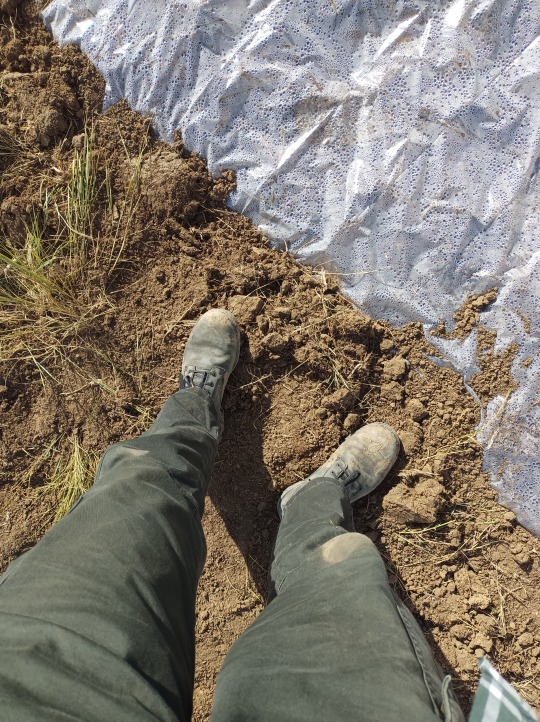
Field work is not glamorous.
It doesn’t matter what field you work in. Often times you’re outside for hours on end, the weather doesn’t cooperate when you need it too, you’re covered in sweat, in dirt, you’re overworked, you’re underpaid, your organization is understaffed, you don’t have the resources or the equipment you need to do the work, and trying to get people to give a shit and effect the change that needs to happen is a perpetual uphill battle that rivals Sisyphus’s eternal punishment. But you adapt, you improvise, and you do the work anyway.
Because it’s important. Because it matters. To me. To you. And to every living thing on this planet. You do it so things can grow and thrive.

Part of my job doing restoration work is removal and management of invasive species, like this Mullein pictured above. Now, Mullein is a plant that originated in Europe and Asia and was brought over to North America for cultivation purposes.
However, it didn't originate in the ecosystems in N. America, didn't evolve along with the local flora and fauna, it has no biological checks in the Great Plains to keep it from overrunning an area like it would in Europe or Asia. Not having any biological checks allows species to create monocultures, which isn't great because it reduces the overall biodiversity of an ecosystem, making it less robust and unable to support the vast array of wildlife you should find in a given area. Some species in the Great Plains do utilize the Mullein as a resource, but again, since it didn't evolve here many species are essentially losing food and habitat because of this plant.
Monocultures also reduce the effectiveness of a habitat's ecosystem services that help support life for all living organisms. Including us. Clean air, clean water, nutrient rich soil to support the growth of food, capturing carbon to sequester to reduce climate change... All reliant on biodiversity. All reliant on populations of native plants.
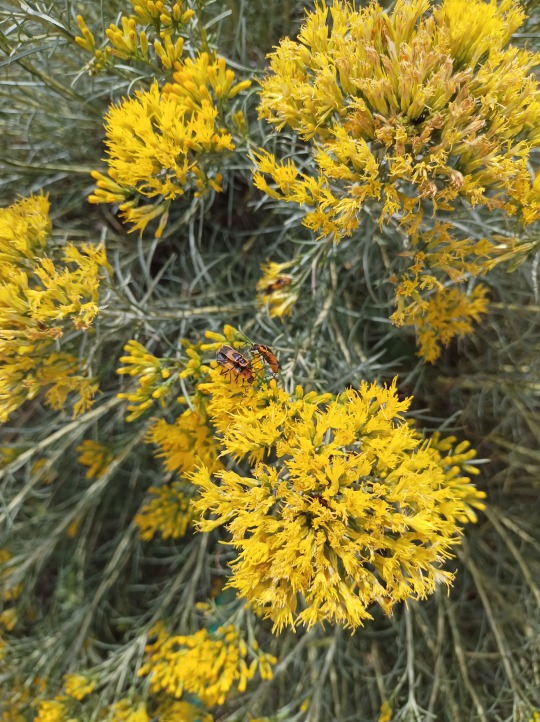

It's not enough to just remove invasive species though. You can't take something out, without putting something back in. Good land management and stewardship practices should also restore ecosystems. Rabbitbrush and Rocky Mountain Bee Plant are both species that are native to my local area, and are a resource for all manner of species.
And that Bee Plant, we planted that last season. It was the only one that grew, but look at all the seed pods on that thing! Hopefully those seeds will go on to make even more Bee Plants and support even more wildlife!
I watched this documentary series last week for work and I'd highly recommend it. It's about the native seed supply chain in the western United States for restoration efforts. A really large area, that needs as much helps as it can get.
https://ser-insr.org/native-seed-film - You can watch it in sections, or they have a couple of different lengths depending on the time you have. But if you only have 12 minutes to give, for sure watch the introduction.
Now, I'd like to point out, these large scale efforts are important, but restoration efforts don't have to be big or elaborate. If you have a spare planting pot or a backyard, you have the ability to restore native habitat. You can bring those ecosystems to you. And it doesn't necessarily require you tearing out your whole yard or sacrificing the plants you do grow.
It may require a bit more homework (you're gonna have to research what plants are native to where you live), and some trial and error, but there are a lot of gorgeous native plants out there that require very little work once they're established compared to "traditional" garden plants.
Humans have carved out huge swathes of land for our own purposes, often to the detriment of other living things and ourselves. We've destroyed entire habitats and ecosystems due to human vanity and simply walked away. Cut our losses. Those habitats and ecosystems are lost. But the land is not gone. And who's to say all those things that are lost can't be found.
It's not easy work, but with some compassion, and a little bit of knowledge, and the willingness to be patient, perhaps we can weave the land back together. Not the way it was, but rather better.
A ghost can dream, right? And perhaps this Pronghorn does too.

It's hard to appreciate the subtle beauty of the prairie. It's not a forest. Not the ocean. Most people might only see grass and not see the richness. The diversity. But I've done a shit-ton of digging this week to try and install a native plant garden.
Field work, manual labor and sweating outside with a shovel, is not glamorous.
But I'm doing this so people can hopefully see the beauty of the prairie, so they can see the beauty in the land around them and perhaps consider planting some native plants of their own. So every living thing out here, big or small, can have a home.

And here's a Megacyllene (sp?), probably a Locust Borer Beetle. It has wasp stripes to dissuade predators from trying to eat it.
#nature#field notes friday#restoration work#short grass prairie#plants#habitat restoration#native plants#locust borer beetle#pronghorn#rocky mountain bee plant#rabbit brush#mullein#land management#land stewardship#native seed restoration#little ghost on the prairie
27 notes
·
View notes
Text
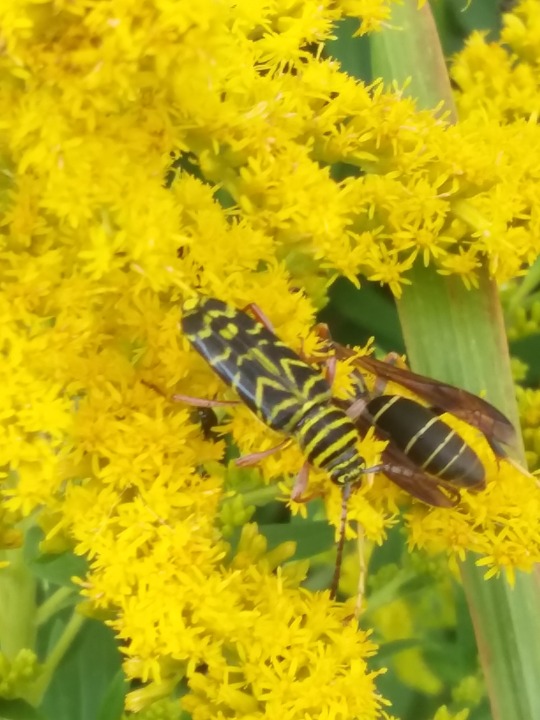
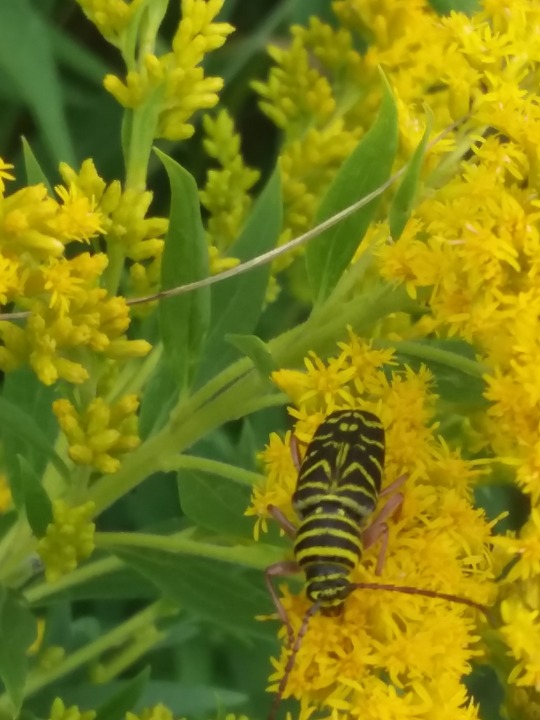

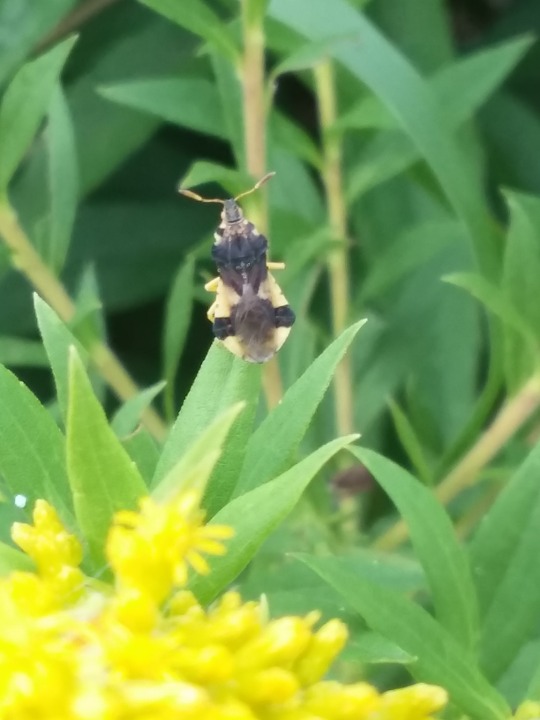
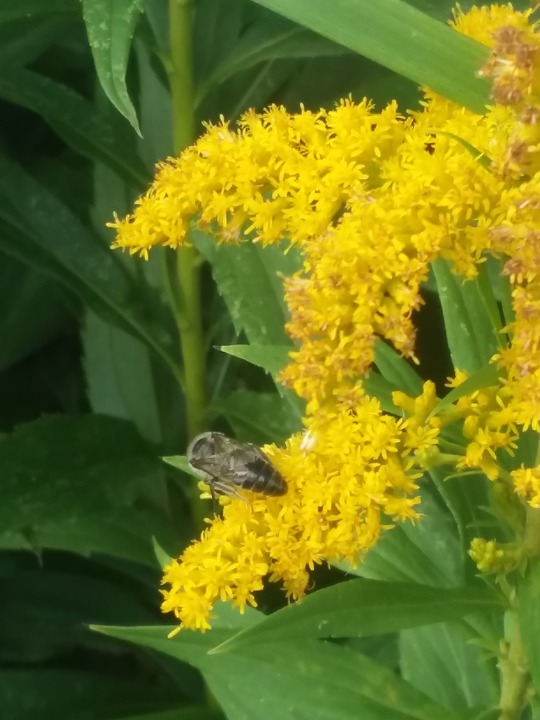

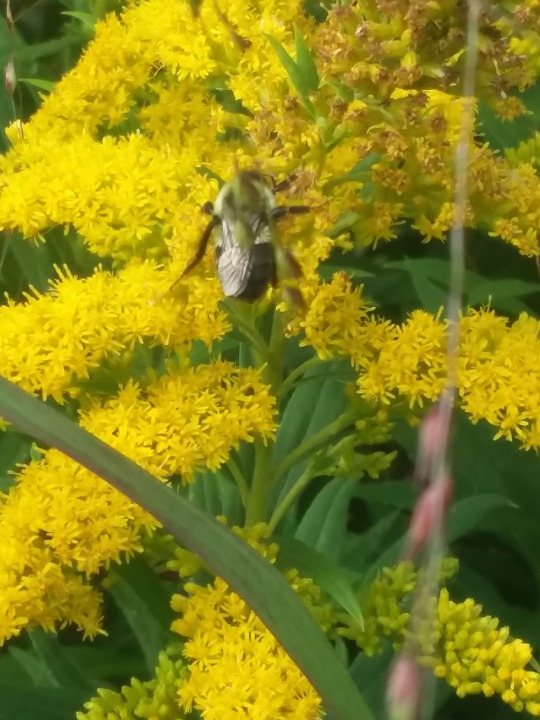
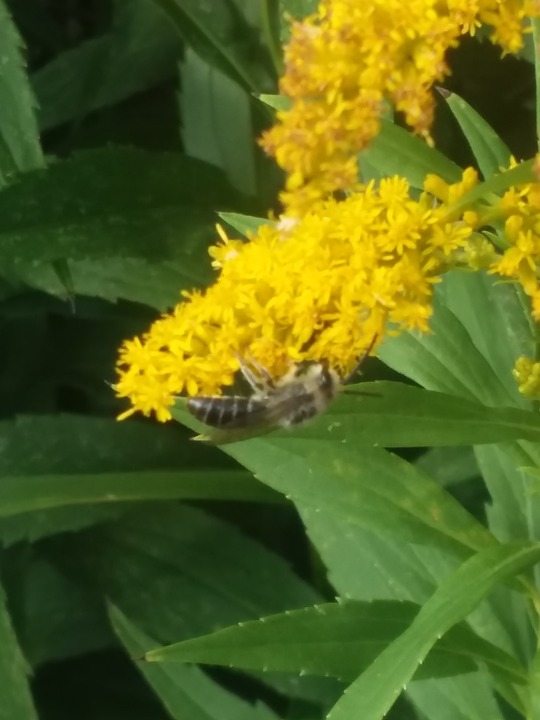
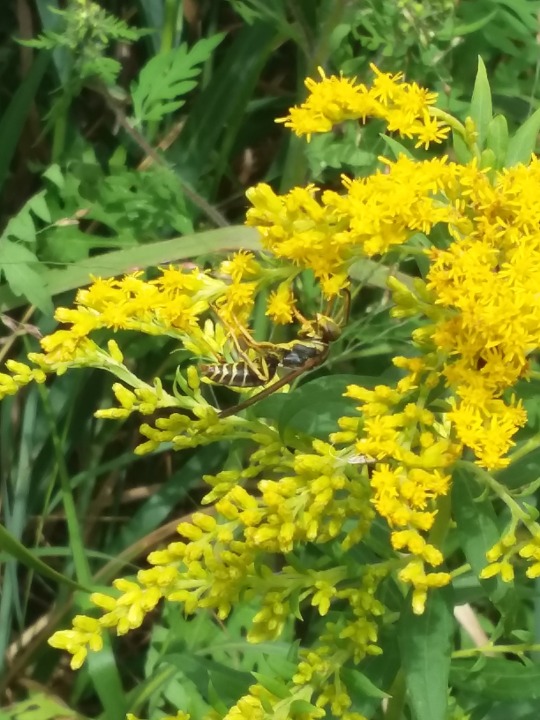

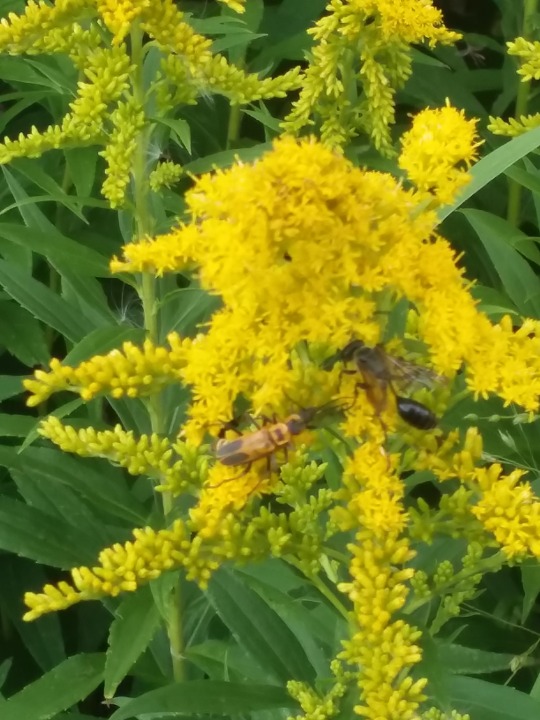

The Golden patch is the place to between July and September if you're a bug.
The small flat bugs with raptorial mantid like arms are Jagged Assassin Bugs, they love hanging out in the Golden Rod and Thistle to snag a snack.
The long yellow stripy beetle is a Locust Borer beetle.
So many native New York Bees and Vespids, which absolutely loved my flower print shirt. It really let me get close and get some interesting shots... it also made me some very curious wasp friends that followed me for a while.
#golden rod#Bugs#locust borer beetle#native bees#native wasps#beetles#nature#photography#dont wear floral prints around wasps unless you want a bunch of new stingy friends
2 notes
·
View notes
Text
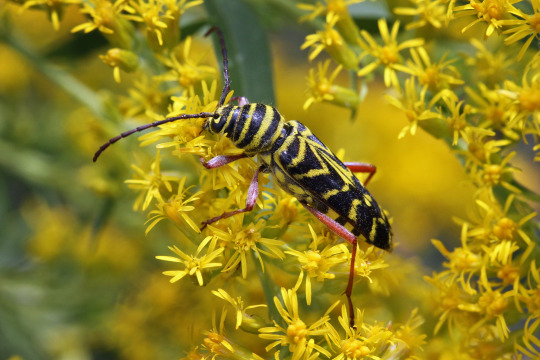
Locust borer (Megacyllene robiniae)
September 22, 2023
Southeastern Pennsylvania
#bug#bugs#photographers on tumblr#locust borer#beetles#coleoptera#bugblr#entomology#insects#insect#animals#nature#Megacyllene robiniae
271 notes
·
View notes
Text
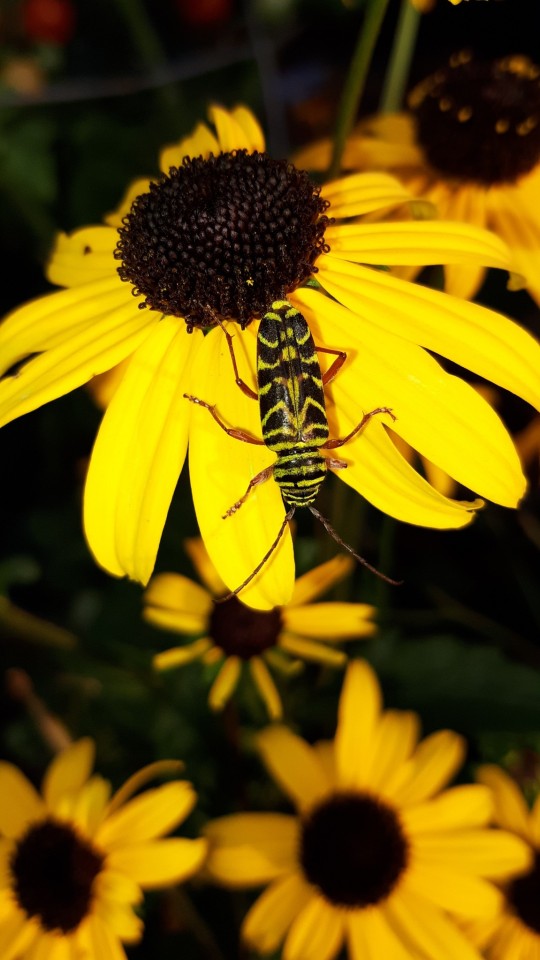
@nimblybimbly submitted: Stylish beetle matching the black-eyed Susans in the Spokane, WA. What’s it called? Thank you!
Beautiful! And they match the flower :) This friend is a type of longhorn beetle called a locust borer!
179 notes
·
View notes
Text
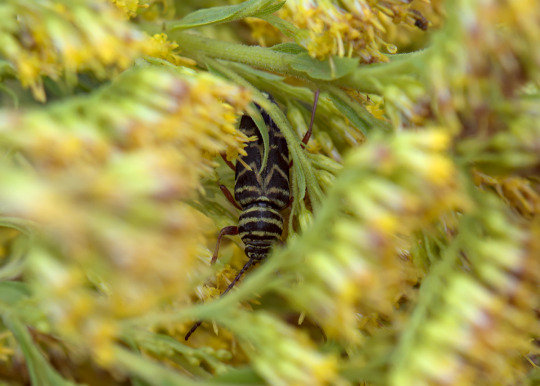
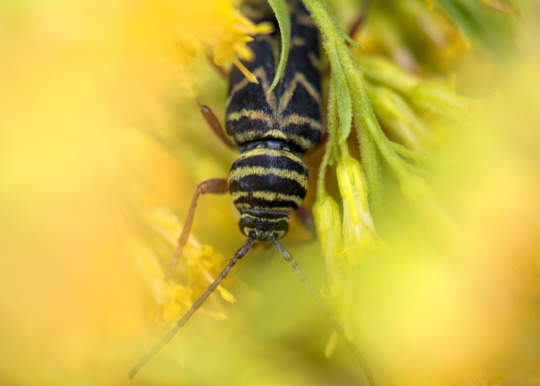
Locust Borer (Megacyllene robiniae)
3 notes
·
View notes
Text
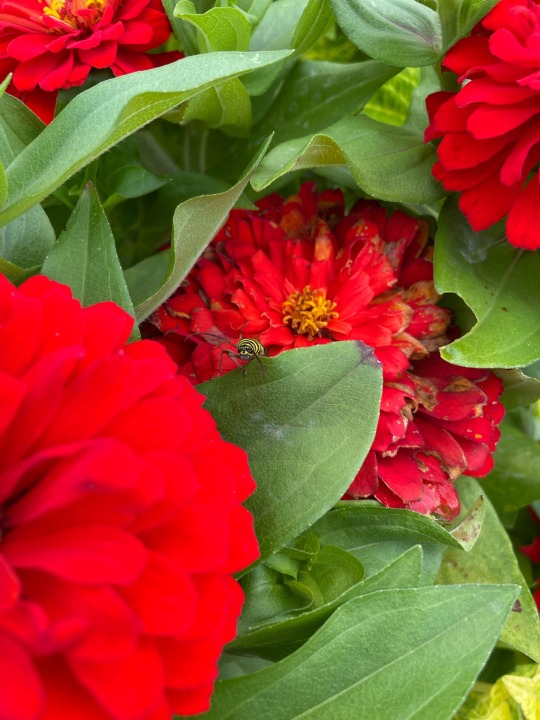
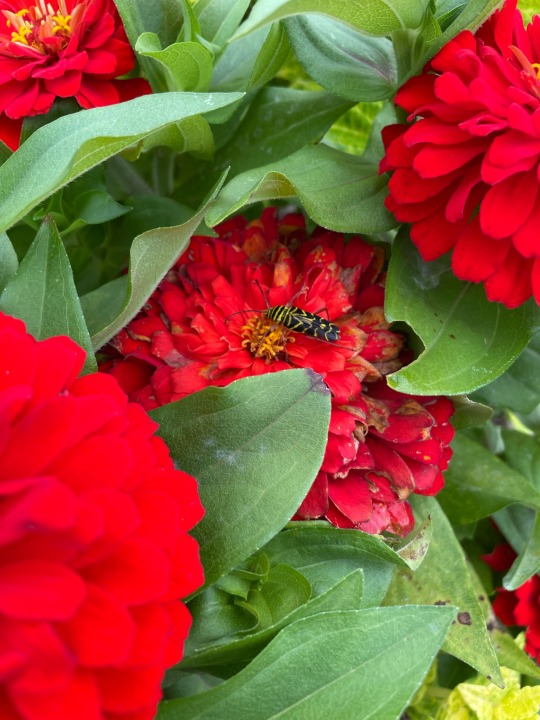
This stripey fellow looks like a locust borer (Megacyllene robiniae)!
0 notes
Note
i am SO sorry about the state of your notifications right now, for what it's worth the original post actually made me cry because of how beautiful and eloquent and moving it was. some of these responses are just..... absolutely bananas lmao. anyway as a distraction: what are your top five species of bug that you wish more people knew about? worldwide, local to you, whatever you want!
Hmm I would say... Dogbane beetles, Longhorn bees, Hummingbird Clearwing moths, locust borers, wheel bugs
Some of these are genera rather than species. Oh well.
85 notes
·
View notes
Text
November 24th, 2023
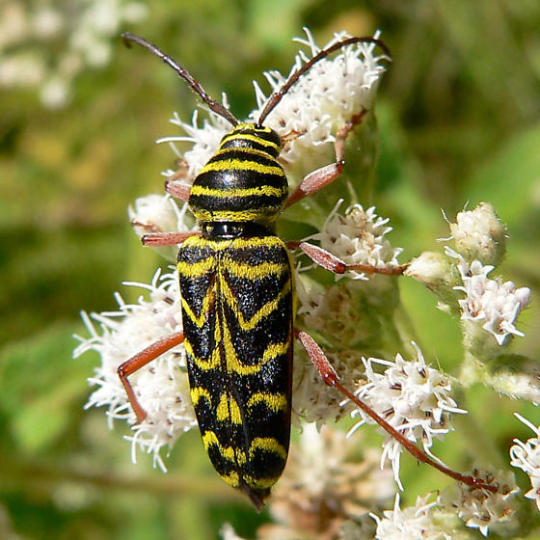
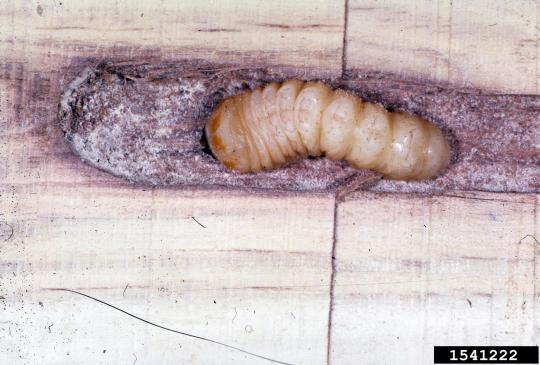

Locust Borer Beetle (Megacyllene robiniae)
Distribution: Originally found only in the northeastern USA, but now found throughout the USA and southern Canada.
Habitat: Usually found in areas where the black locust tree Robinia pseudoacacia is present, especially where goldenrod can also be found; usually uncultivated fields and meadows.
Diet: Larvae feed on woody tissues of the black locust tree; adults feed on the pollen of goldenrod flowers.
Description: The locust borer beetle is a serious pest of black locust trees, singlehandedly destroying the value of what is otherwise an extremely valuable timber tree. Female beetles lay their eggs near wounds or in crevices, where newly-hatched larvae will overwinter. In the spring, they bore into the tree bark, forming tunnels 10 centimetres long and 0,7 centimetres wide. These tunnels serve as an infection site for fungi, which can infect the trees and render them stunted and diseased. Trees suffering from drought and those growing in open areas, like roadsides, or in eroded or nutrient-deficient soil are especially vulnerable to attack. This species isn't known to feed on any other tree species.
(Images by 1) Marcie O'Connor (adult), 2) Lacy L. Hyche (larva) and 3) James Solomon (damage))
11 notes
·
View notes
Text
Saw a Solidago today that was crawling with yellow and black insects.

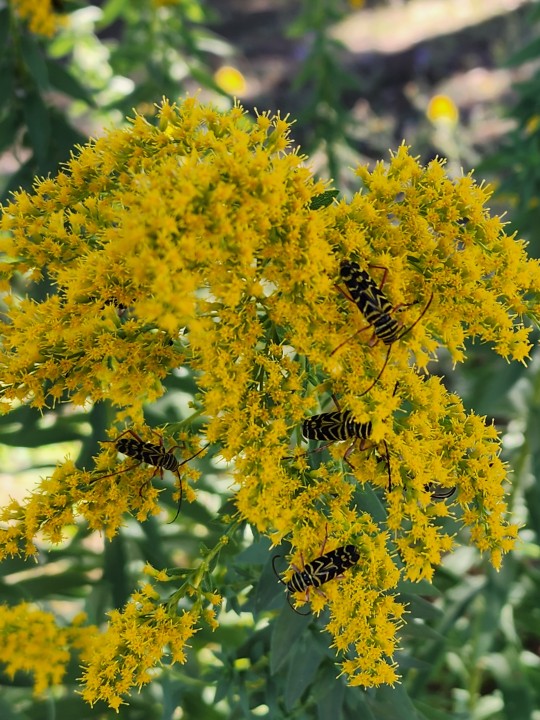
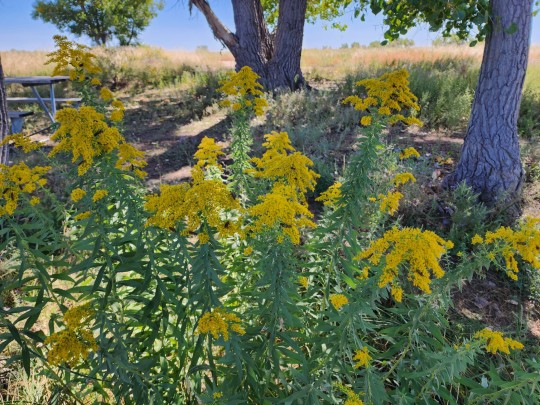
Image ID. Some yellow goldenrod flowers with a bunch of bugs on it. End ID.
At first I thought it was just the beetles (locust borers, Megacyllene robiniae), but there were also a couple wasps (Polistes sp. and somebody from Halictidae) and wasp mimic hover flies (probably Spilomyia).

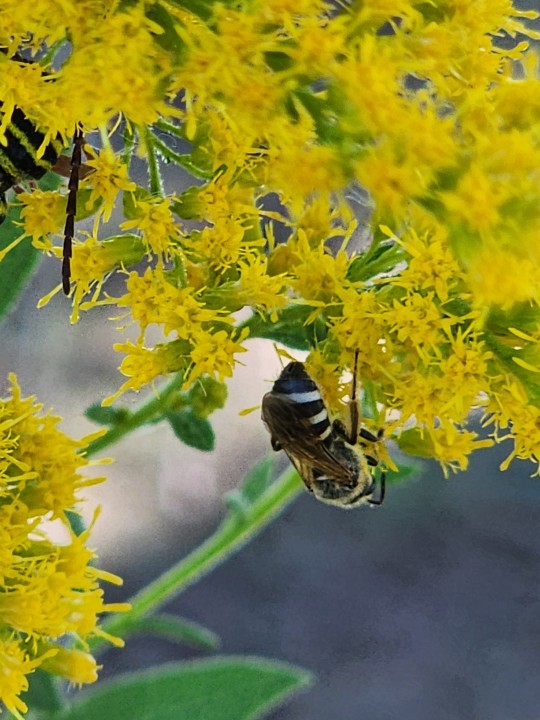


Image ID. Closer shots of the bugs in question. All are striped in bright yellow and black, but they are a beetle, a bee, a fly, and a wasp. End ID.
#insects#harper talks#solidago#wasps#hymenoptera#coleoptera#beetle#mimicry#biology#diptera#flies#goldenrod
7 notes
·
View notes
Text
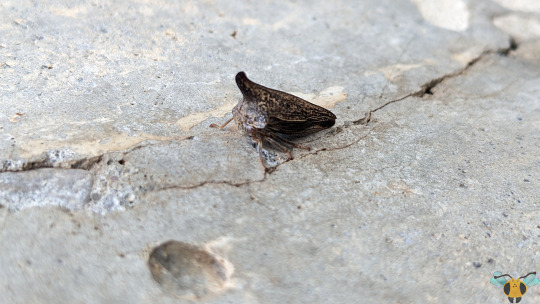

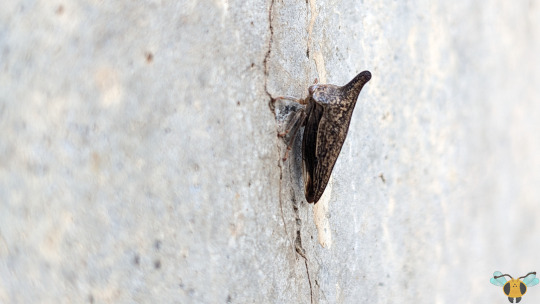

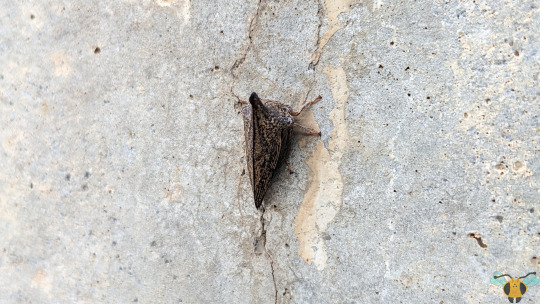
Locust Treehopper - Thelia bimaculata
With that long protrusion jutting from this insect's pronotum, she could easily be mistaken for a thorn on a tree! That's exactly the point here, as this specie is reported to rest upon its host plant's branches with other adult individuals arranged in a row. The females are probably the better mimics against tree branches compared to the males. The main reason for that is the color on display between females and males. While females have a mottled appearance (like the individual shown here) that lends itself well against bark and branches. Male individuals possess a sash of yellow against the shell, just above the base (reaching the midpoint) of the wing, which could possibly serve as a display color to females. I have my doubts for the color display as this Treehopper is reported to have poor vision and acquire mates using calls; maybe a closeup will do in that case. For a photography closeup, you may need to climb up to find one of these or wait and see if an adult individual has fallen to the ground; nymphs may be found further down on tree trunk.
Anyways, both females and males have their thorn-like protrusions (the nymphs rely on protection via Ant mutualism), but the males will have to be content appearing as if there is a sunspot on the their bodies. If the disguise is effective enough, the Locust Treehopper aggregations can spend their days in the treetops consuming plant juices from the tree's branches and petioles. Fortunately for this Bug, its host plant - the black locust tree - has thorn-lined branches, which hopefully contributes to a more convincing mimicry, therefore lowering the interest of would-be predators. Though handy for camouflage, the protrusion is not a tool for fending off competitors or fighting, though the hopper could likely still live a good life with a chip taken off as its body is otherwise well-shielded. Just speculation on my part but the horn could serve as an indicator of fitness or health, and by extension, individuals with larger, intact horns have a better chance at securing a mate. Just a thought I had based on the results of a few published articles I've come across, but it's important to remember that not all Treehoppers have elongated pronotum protrusions, so the fitness evaluation may need to be researched on a specie by specie basis.
Pictures were taken on October 24, 2023 with a Google Pixel 4. To see another insect which uses black locust trees as its host, you can visit the posts covering the Locust Borer Beetle.
#jonny's insect catalogue#ontario insect#treehopper#locust treehopper#hemiptera#auchenorrhyncha#true bug#hopper#insect#toronto#october2023#2023#nature#entomology#invertebrates
1 note
·
View note
Text
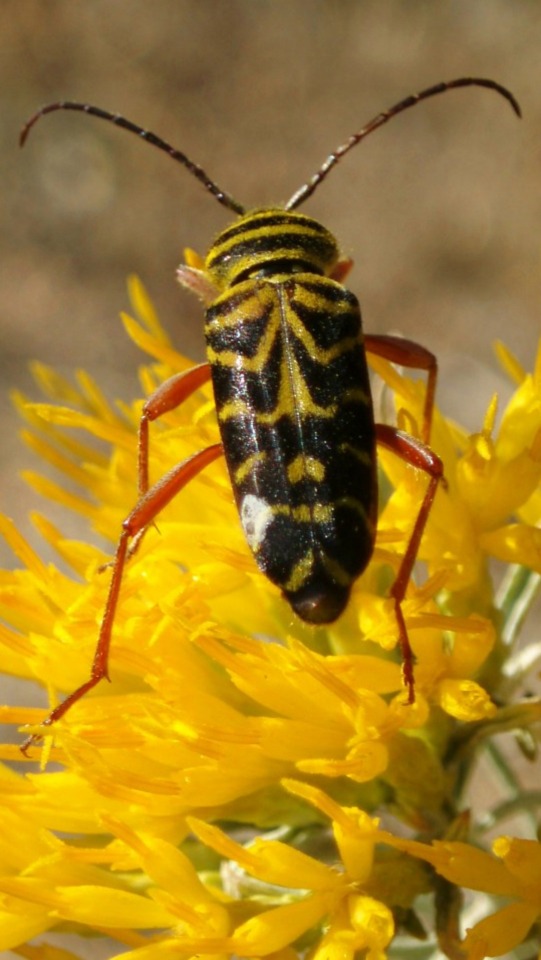


Top (my own photos): Long-horned beetle [Cerambycidae family] (Megacyllene robiniae), a.k.a. locust borer beetle on rabbitbrush (chamisa) (Ericameria nauseosa). Mimicry (of wasp) or camouflage on rabbit brush - or both?
Bottom: Wasp on Rabbit brush
1 note
·
View note
Photo
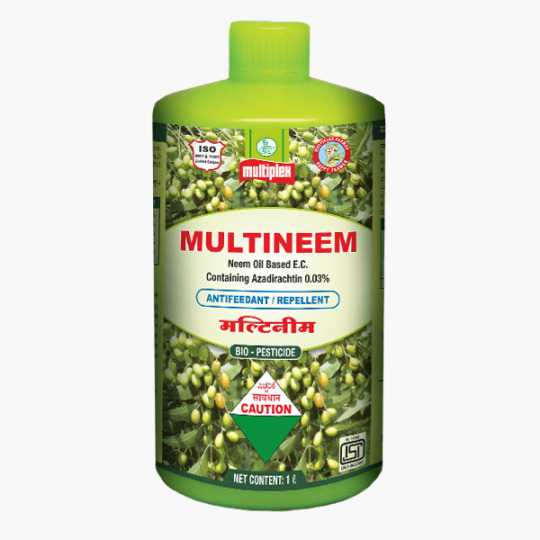
AVAILABLE PACKING:
100 ml, 250 ml, 500 ml, 1 litre & 5 Litres
Active Ingredients:
Neem Oil Based Bio-Pesticide containing Azadirachtin Multineem - 0.03% EC W/W min & Multinemor - 0.15% EC W/W min.
Mode Of Action:
Azadirachtin is a compound which shows antifeeding effect in insects by the mode of chemoreception (primary effect) and food consumption by the insects is relatively reduced (secondary effect). These symptoms are shown because of the repellent and antifeedant nature of the azadirachtin. Azadirachtin at the larval stage, reduced longevity, wingless adults, incomplete moulting process, pupae result with various deformities. Disrupts mating and sexual communication (release of pheromones) in insects. Deters females from laying eggs and kills eggs (ovicidal activity) and sterilizes adults. A bitter and strongly odoured active ingredient keeps the insects away from plants.
DOSAGE & Methods Of Application:
Mix 3 to 5 ml of Multiplex Neem or 1 to 3 ml of Multiplex Multinemor in one liter of water and spray on plants. It is highly effective when used as a Preventive/ Prophylactic application. We recommend regular sprays at an interval of 20 to 25 days for better results
Benefits:
• Effectively prevents insects from sucking or eating plant parts of all crops • Repells insects by its strong repellent odour and disrupts the different stages of life cycle in insects. • Prevents insects from developing resistance against pesticides. • Effective against plant nematodes and fungi. • Easily degradable (leaves no toxic residues) and not harmful to human beings and pet animals
Note:
TARGET PESTS: Plant Hoppers, Caterpillars, Leaf hoppers, Pod borers, Stem borers, Fruit borers, moths, Diamond Black Moth, Beetle, Plant bugs, Gall midges, Fruits flies, grasshoppers, locusts, psyllids, thrips, aphids and white flies.
0 notes
Photo
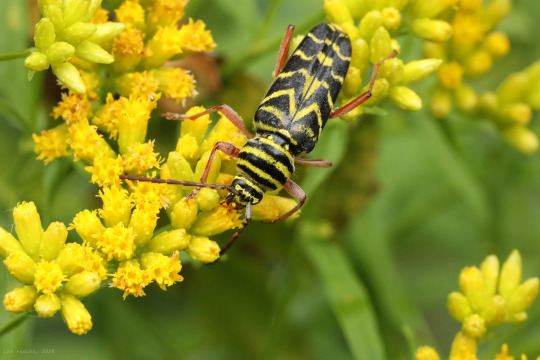
A locust borer beetle (Megacyllene robiniae) digs for summer gold in the budding flowers of grass-leaved goldenrod (Euthamia graminifolia).
#appalachia#vandalia#west virginia#flora#summer#wildflowers#asteraceae#euthamia#grass-leaved goldenrod#flat-topped goldenrod#beetle#insect#locust borer#megacyllene#coopers rock state forest
10 notes
·
View notes
Photo
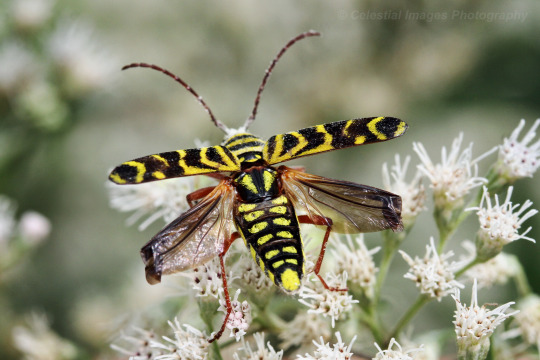
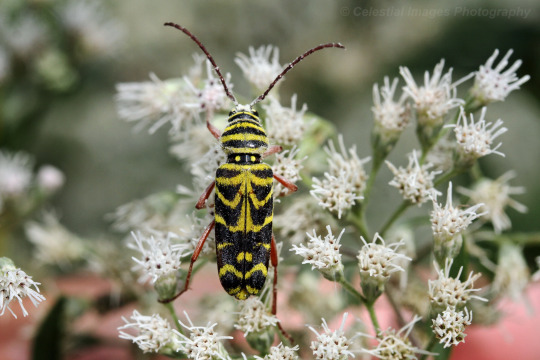
The moment of lift-off
Locust Borer (Megacyllene robiniae)
September 14, 2020
Southeastern Pennsylvania
#First one I've ever seen that wasn't on goldenrod#bug#bugs#photographers on tumblr#beetle#beetles#Megacyllene robiniae#locust borer#bugblr#entomology
452 notes
·
View notes
Text
@shuushaming submitted: Hi, I found these guys a couple weeks back in Natrona County, Wyoming. Thought they were neat but I've never seen either of them before. Any idea what they are? Thanks, and have a lovely day!!
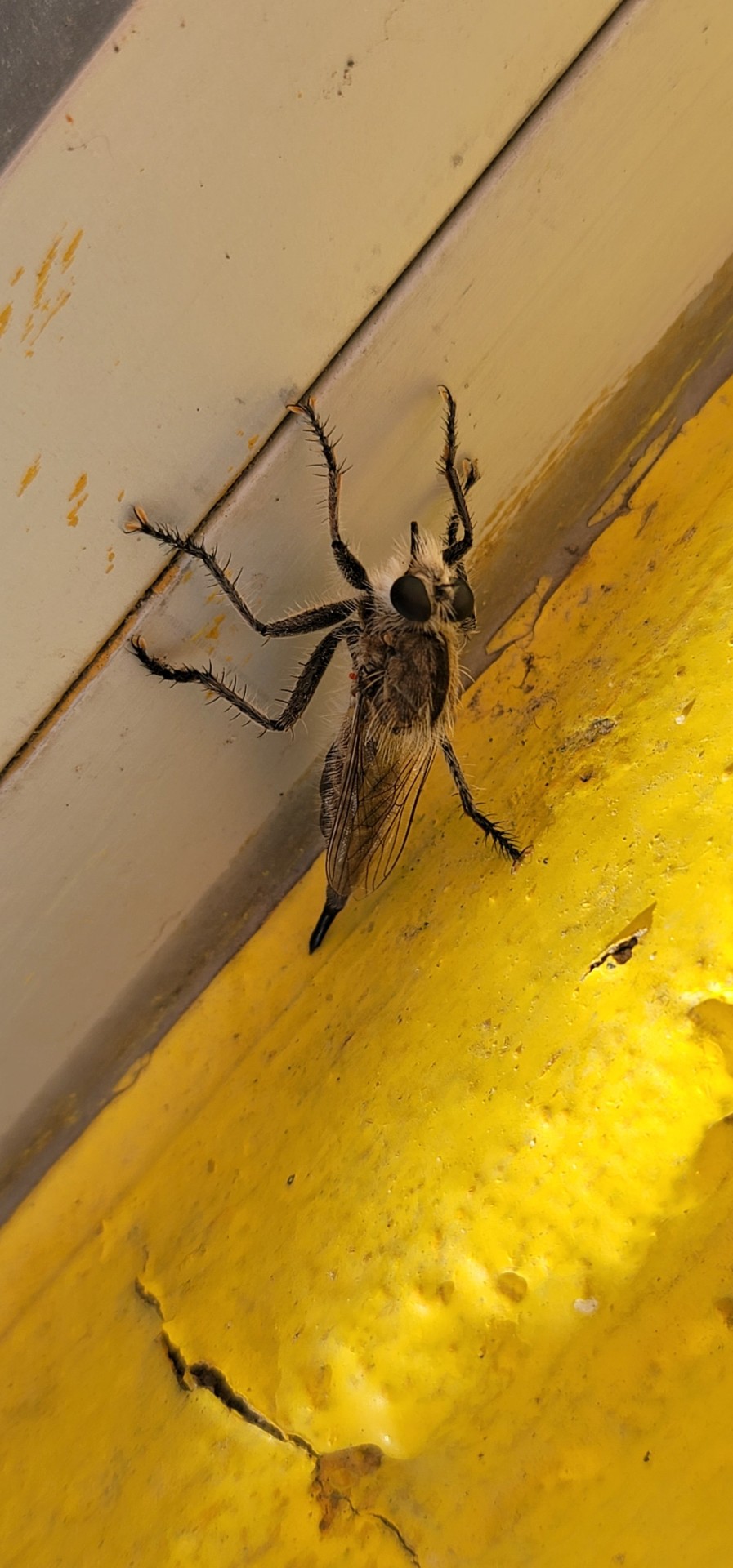

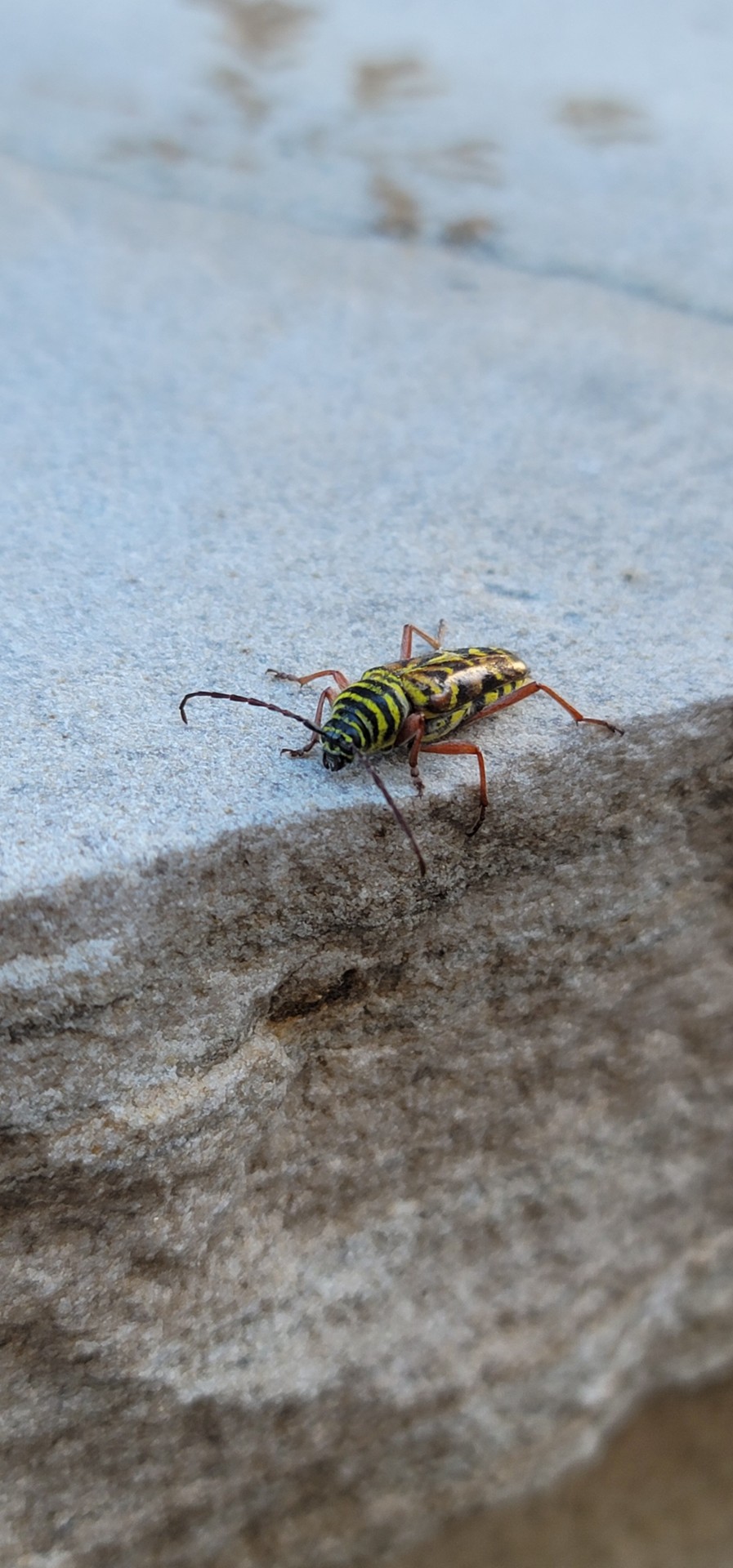

Helloooo the large fuzzy fella is a robber fly and the wasp mimic beetle is a locust borer, which is a type of longhorn beetle :)
60 notes
·
View notes
Text
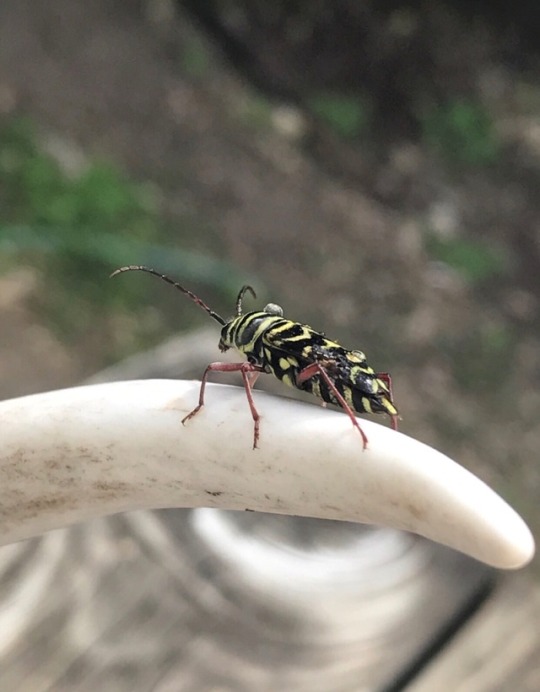
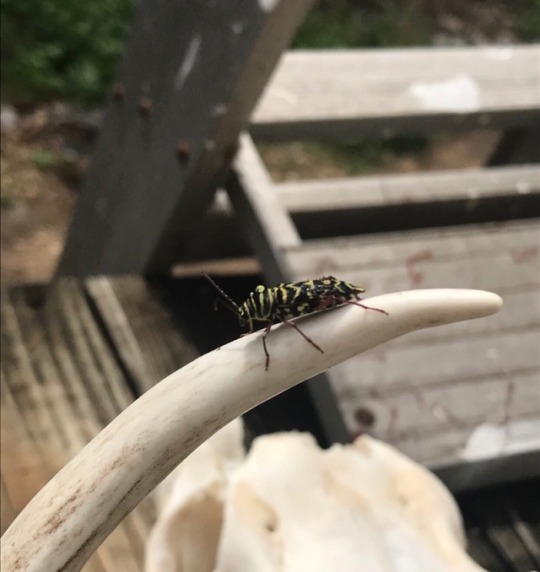
hello everyone please enjoy these cool pics of this bug i saw today
edit: i think it's a locust borer
19 notes
·
View notes